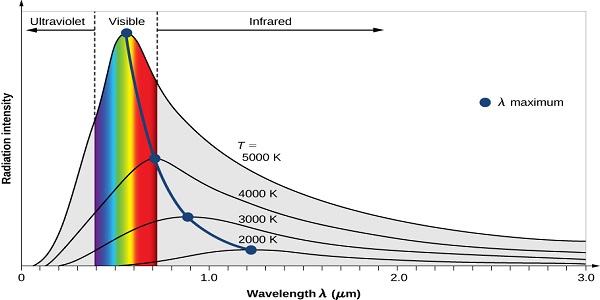Black Body Radiation:
Black-body radiation is the thermal electromagnetic radiation within or surrounding a body in thermodynamic equilibrium with its environment, emitted by a black body (an idealized opaque, non-reflective body). It has a specific spectrum of wavelengths, inversely related to intensity that depend only on the body’s temperature, which is assumed for the sake of calculations and theory to be uniform and constant.
Black Body Radiation Spectrum:

Black-body radiation has a characteristic, continuous frequency spectrum that depends only on the body’s temperature, called the Planck spectrum or Planck’s law. The spectrum is peaked at a characteristic frequency that shifts to higher frequencies with increasing temperature, and at room temperature most of the emission is in the infrared region of the electromagnetic spectrum. As the temperature increases past about 500 degrees Celsius, black bodies start to emit significant amounts of visible light. Viewed in the dark by the human eye, the first faint glow appears as a “ghostly” grey. With rising temperature, the glow becomes visible even when there is some background surrounding light: first as a dull red, then yellow, and eventually a “dazzling bluish-white” as the temperature rises. When the body appears white, it is emitting a substantial fraction of its energy as ultraviolet radiation.
